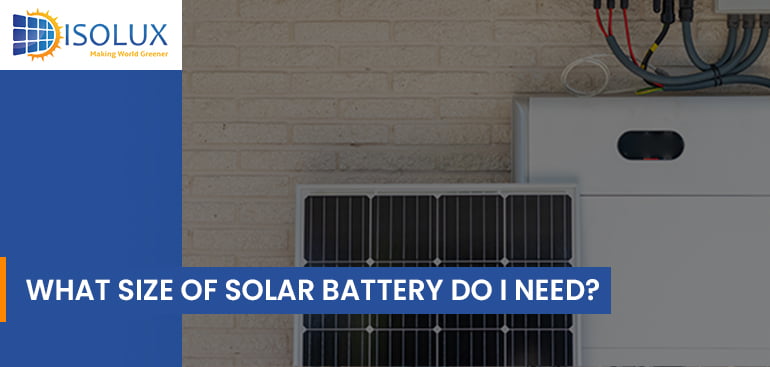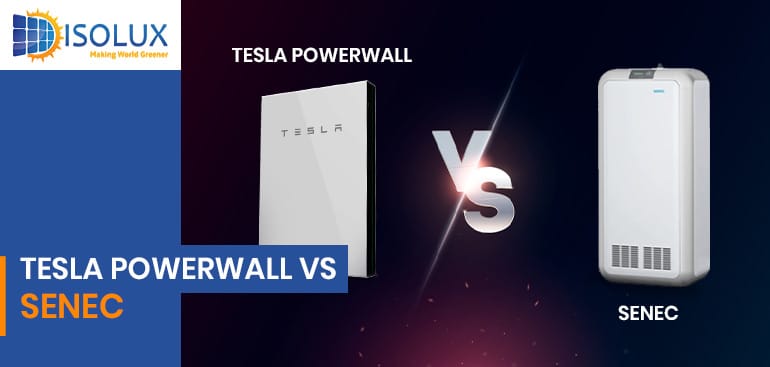Solar energy has become increasingly popular over the years as people seek to reduce their carbon footprint and save money on electricity bills. One of the most important components of a solar system is the battery.
In this blog, we will discuss what size of solar battery you need for your solar system.
Understanding Your Energy Needs:
The first step in determining the correct size for your residential solar battery system is to understand your energy needs. This includes looking at your current energy usage, as well as any future changes you may make to your energy consumption. By understanding your energy needs, you can determine how much energy storage capacity you will require from your solar battery system.
Sizing Your Battery System with Solar System:
Once you have determined your energy needs, you can begin sizing your residential solar battery system. This involves looking at the capacity of the battery and the amount of energy it can store. It’s important to choose a battery with a capacity that is appropriate for your needs, as choosing a battery that is too small can result in a system that doesn’t meet your energy requirements.
You May Like: How Do Solar Batteries Work to Store Solar Power?
How Battery Size is Calculated
In order to determine what size battery is needed, it’s important to understand the terminology used for battery sizing. Battery sizes are measured in kilowatt hours (kWh), which refers to the amount of energy stored in the battery. Solar panel systems, on the other hand, are measured in kilowatts (kW), which refers to the power that the system can generate. Your electricity bill measures energy usage in kilowatt hours.
You May Like: How Many Hours Will A Solar Battery Last?
For the average Australian home, daily electricity usage is around 16 kWh, with approximately 30% being used during the day and 70% at night. Using this usage profile, it can be calculated that 4.8 kWh of electricity is used during the day, and 11.2 kWh is used during the evening and night. Therefore, a battery that can store at least 11 kWh of electricity would be needed.
However, if there are plans to increase electricity usage in the future, such as for charging an electric vehicle or running electric appliances, a larger battery may be necessary. The battery, which can store 10 kWh of electricity and can be expanded with additional batteries if needed, is a good option for many homes. It requires at least 5-6 kW of solar panels, ideally 10 kW, to power it.
Factors to Consider:
There are several factors to consider when sizing your residential solar battery system. These include:
Solar Panel Capacity: The capacity of your solar panels will determine how much energy your system can generate. If your solar panels have a low capacity, you may need a larger battery system to store the energy.
Energy Consumption: Your energy consumption will also play a role in determining the size of your battery system. If you have a high energy consumption, you may need a larger battery to store the excess energy.
Backup Power: If you require backup power during power outages, you may need a larger battery system to ensure that you have enough energy to power your home.
Budget: Your budget will also play a role in determining the size of your battery system. Larger battery systems tend to be more expensive, so it’s important to choose a system that meets your energy needs without breaking the bank.
Types of Solar Batteries
There are several types of solar batteries that you can choose from, each with its own advantages and disadvantages. The most common types of solar batteries include:
1. Lead-acid
Lead-acid batteries are the most common type of battery used in solar systems. They are reliable and affordable but have a shorter lifespan than other types of batteries. They also require regular maintenance to ensure that they perform optimally.
2. Lithium-ion
Lithium-ion batteries are becoming increasingly popular because of their long lifespan and high energy density. They are also lightweight and require minimal maintenance. However, they are more expensive than lead-acid batteries.
3. Flow
Flow batteries are a recent addition to the battery storage industry, despite their technology being in existence for a considerable time. These batteries are known as flow batteries due to the presence of a water-based zinc-bromide solution that moves around inside them. Currently, only a handful of companies manufacture flow batteries for residential use, with Redflow being the most notable one. Redflow, an Australian company, outsources its battery production to Thailand (previously North America). The smallest flow battery available for purchase is the ZCell.
4. Sodium Nickel Chloride
The sodium nickel chloride technology is emerging as a competitor to the widely used lithium-ion storage technology. In Australia, GridEdge has introduced the Quantum battery, which stands out for its distinctive battery chemistry and provides a variety of environmental and safety advantages.
You May Like: How Long Do Solar Battery Last?
Conclusion
Choosing the right size of solar battery for your system is crucial to ensure that you can maximize your solar energy usage and reduce your reliance on the grid. By considering factors such as energy usage, battery capacity, depth of discharge, battery chemistry, temperature range, and brand, you can make an informed decision when choosing a solar battery.
Get in touch for an obligation-free quote.
Get in touch with Isolux Solar today for expert advice and an obligation-free solar battery storage quote.




